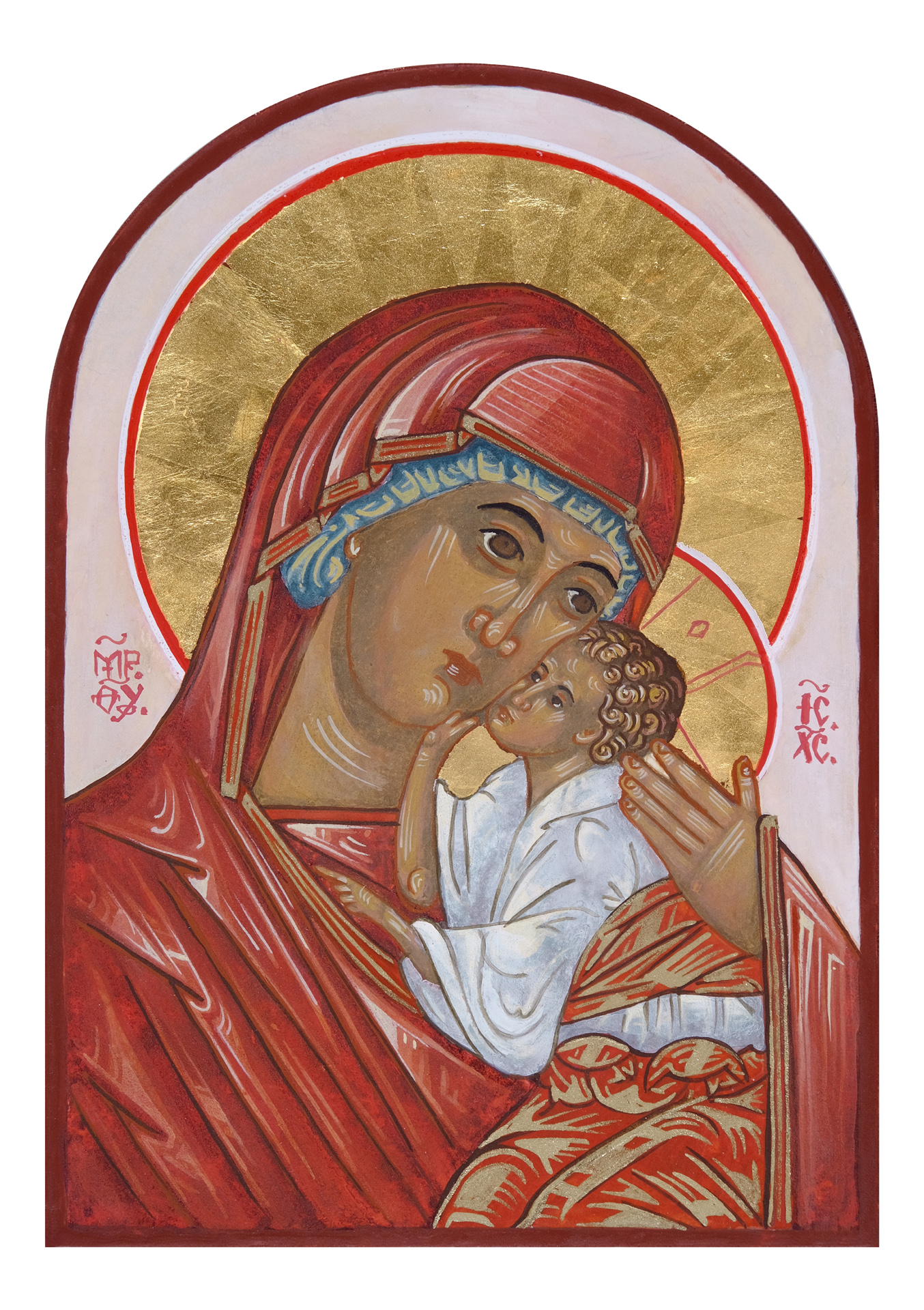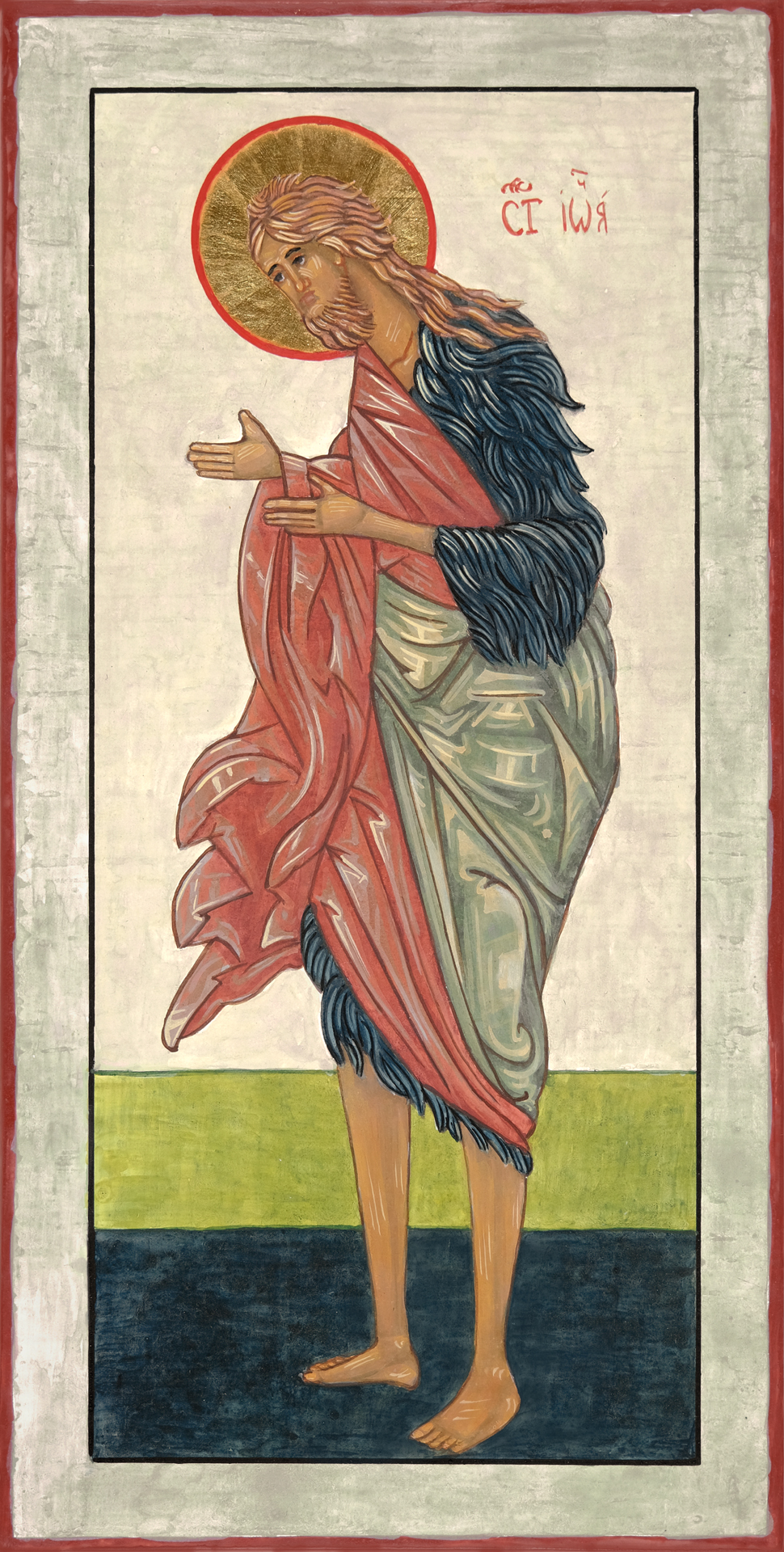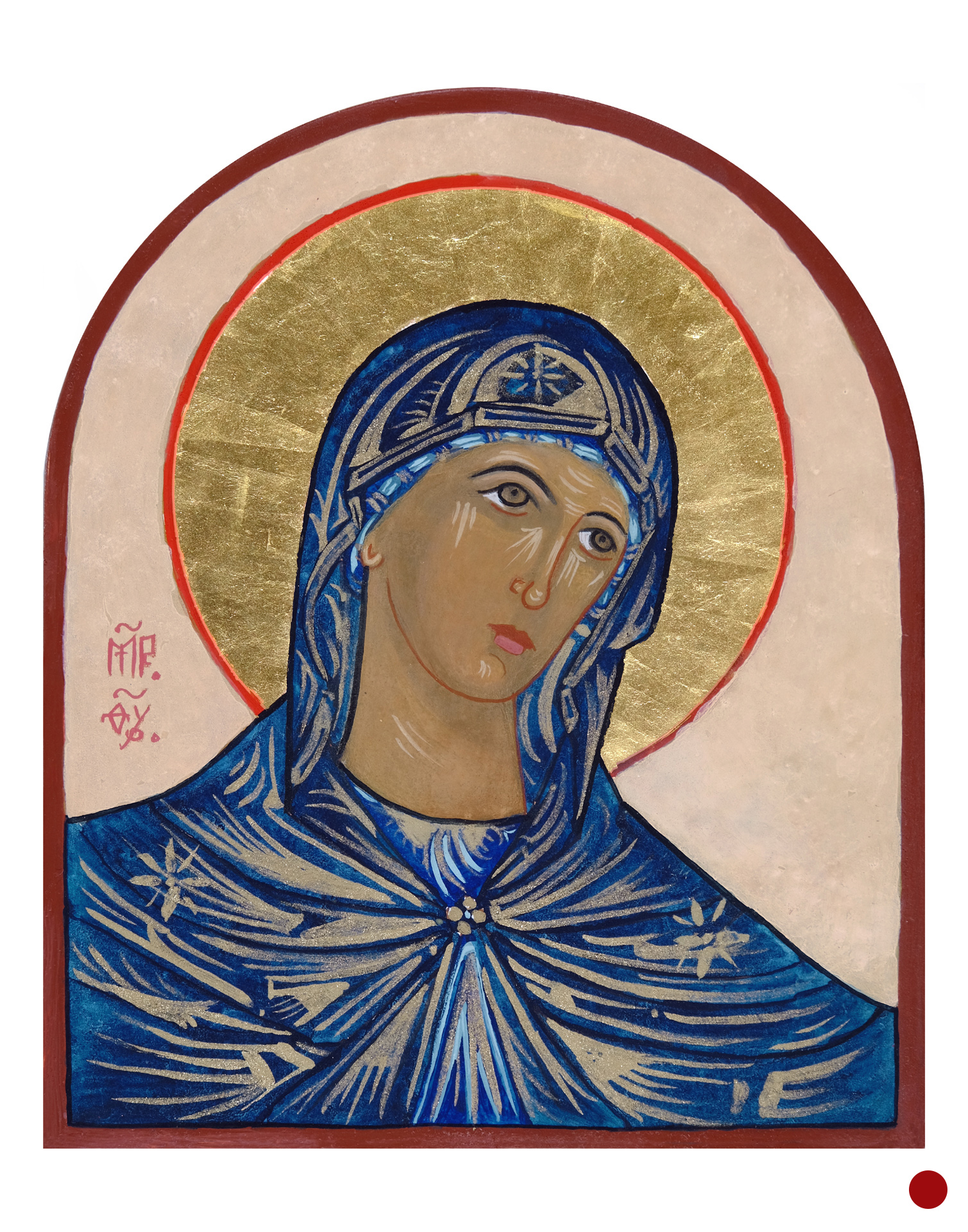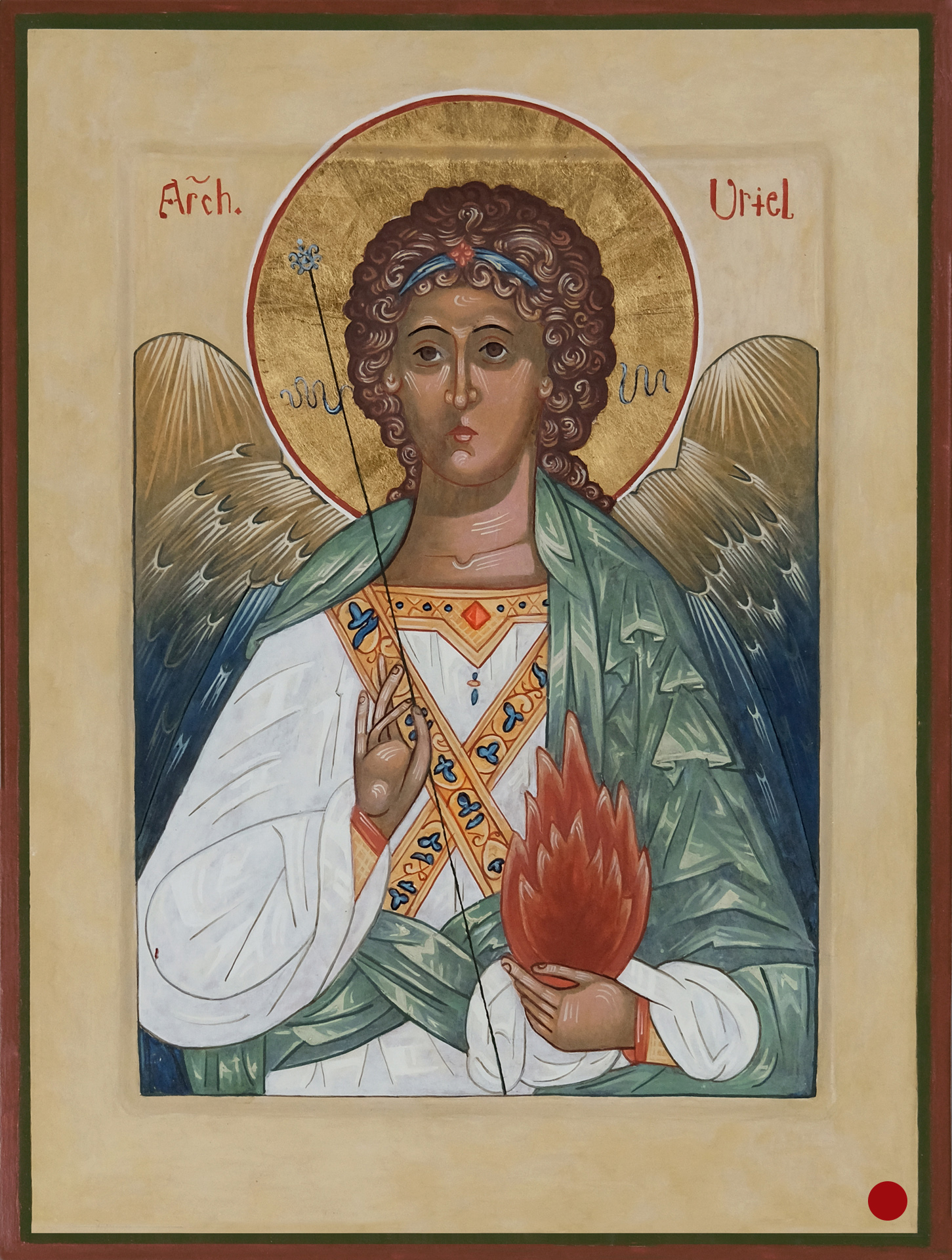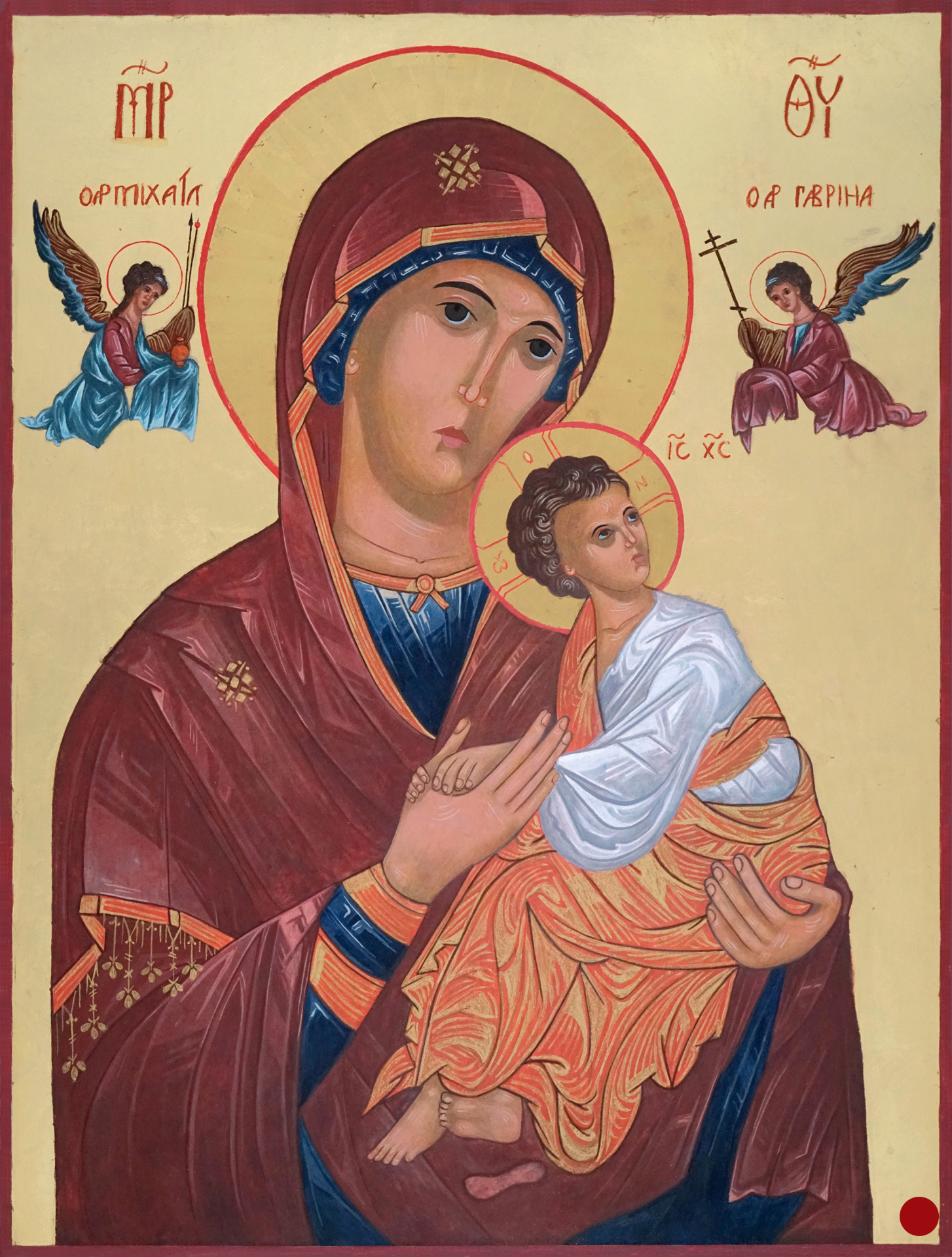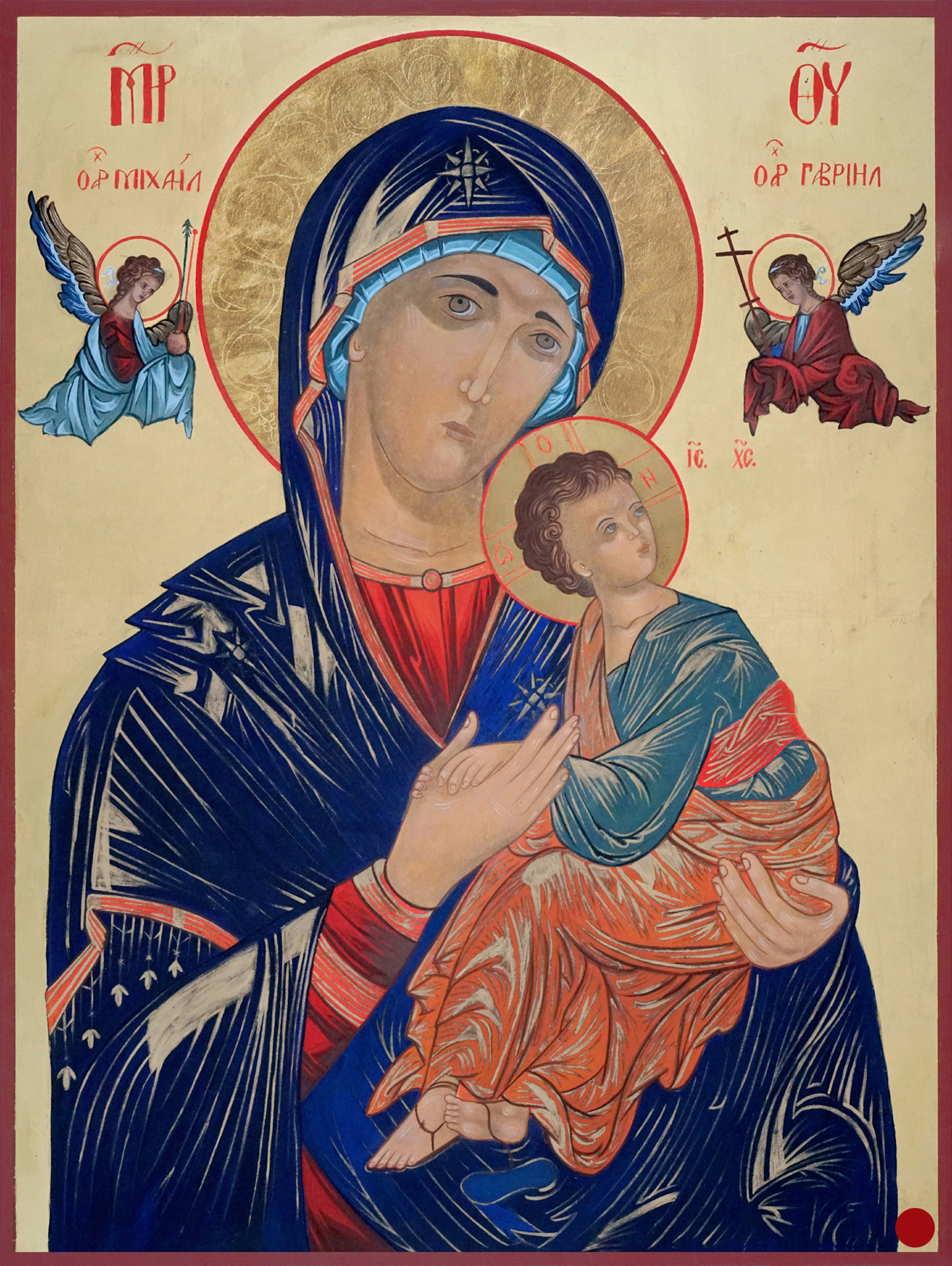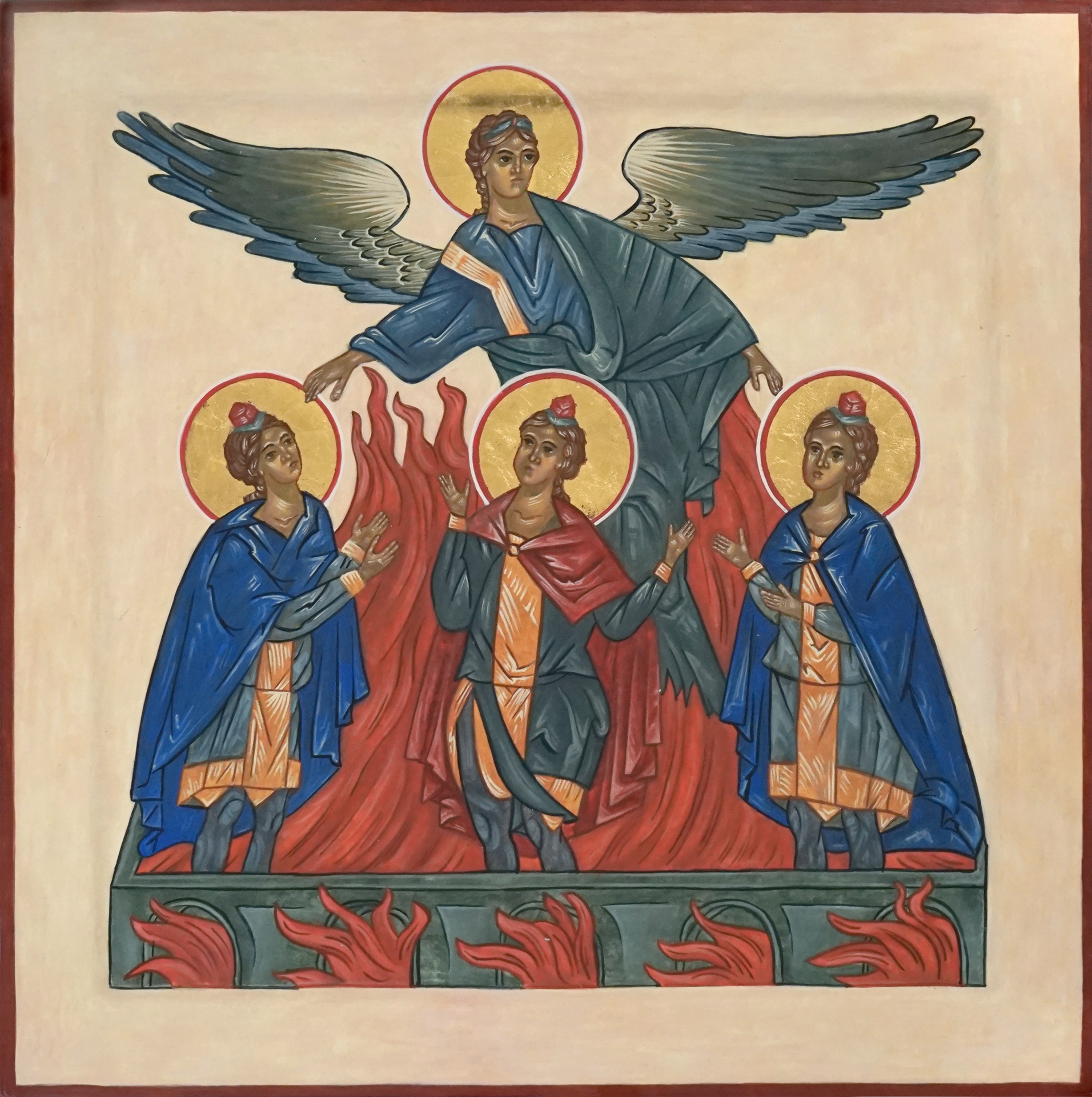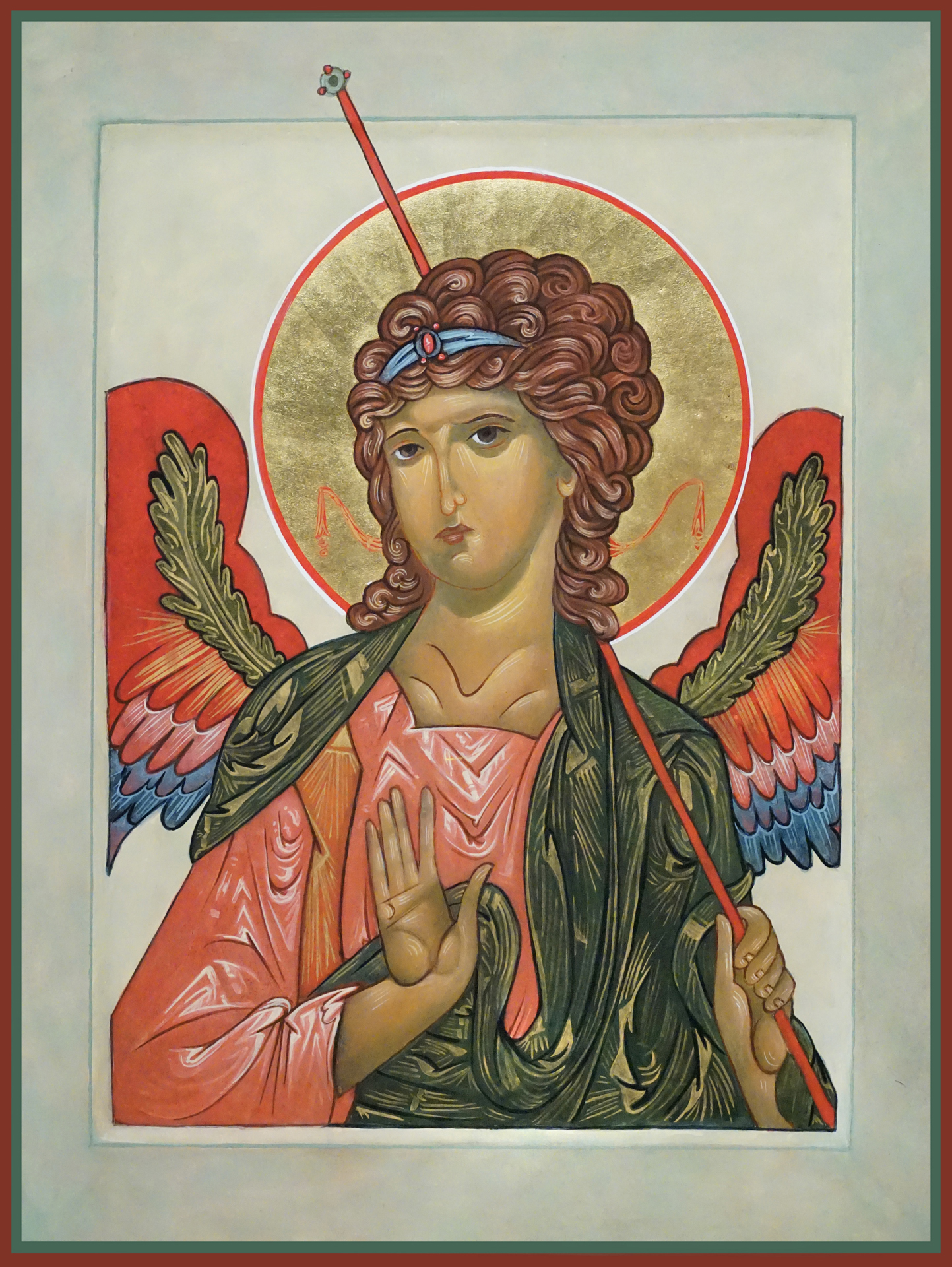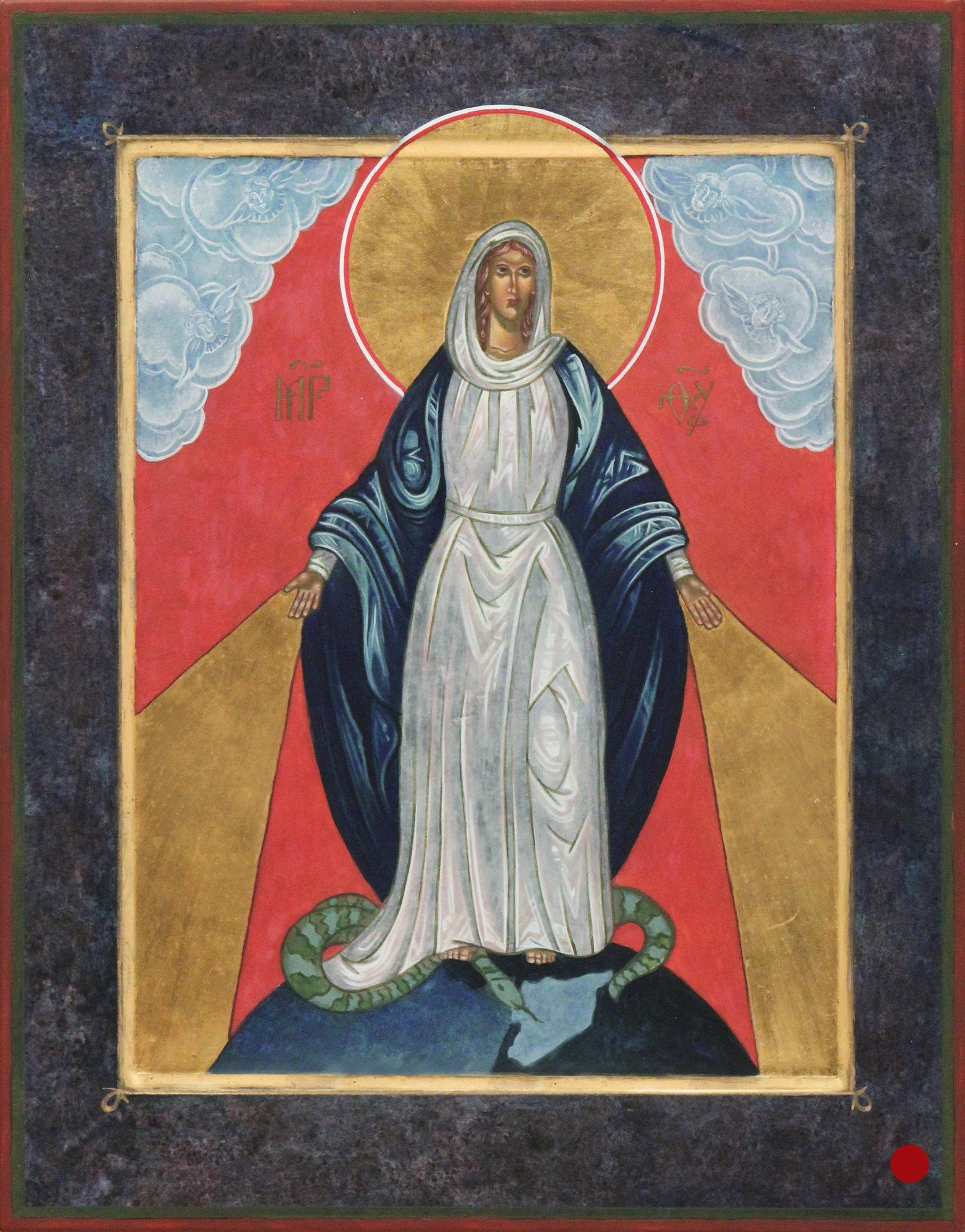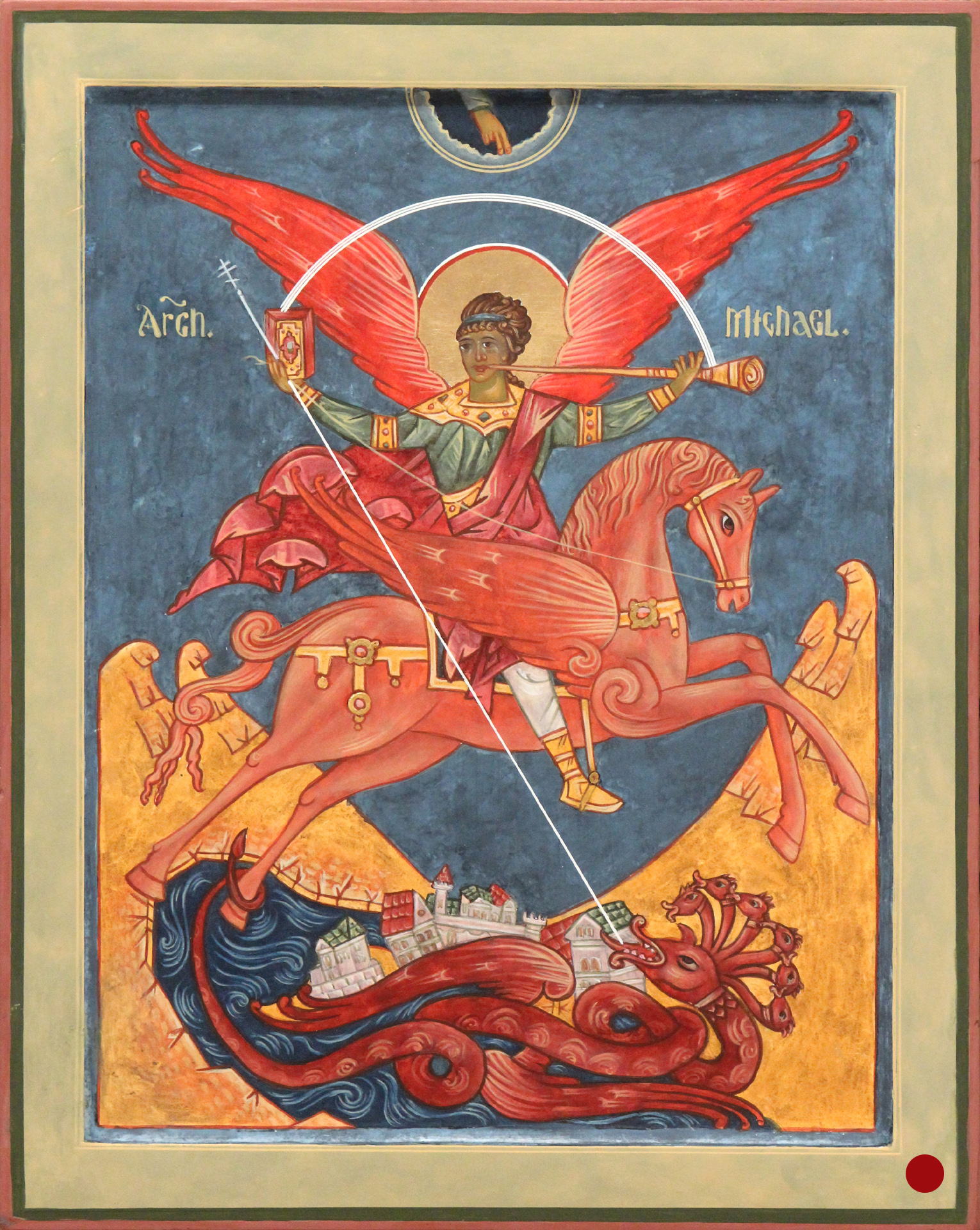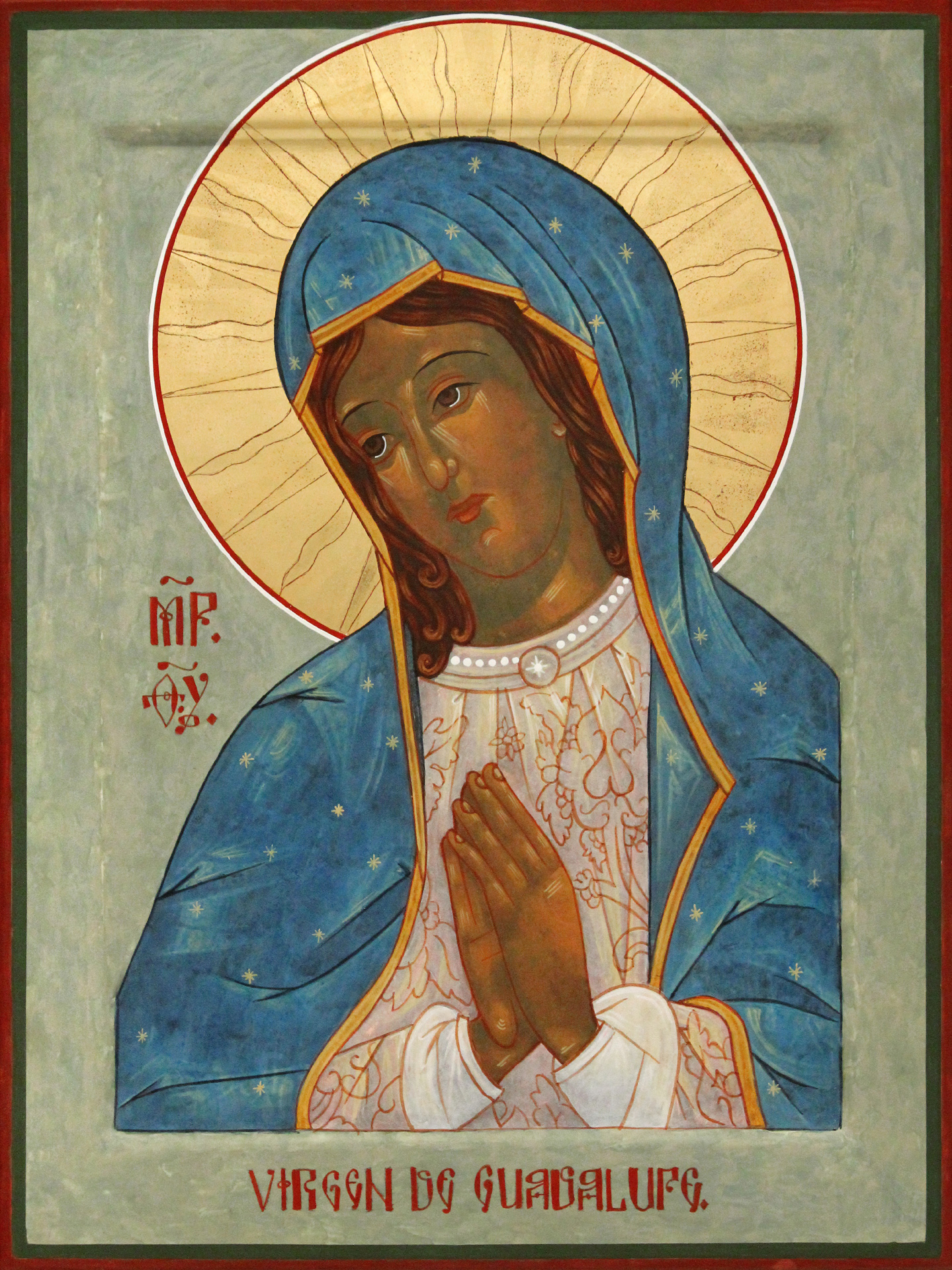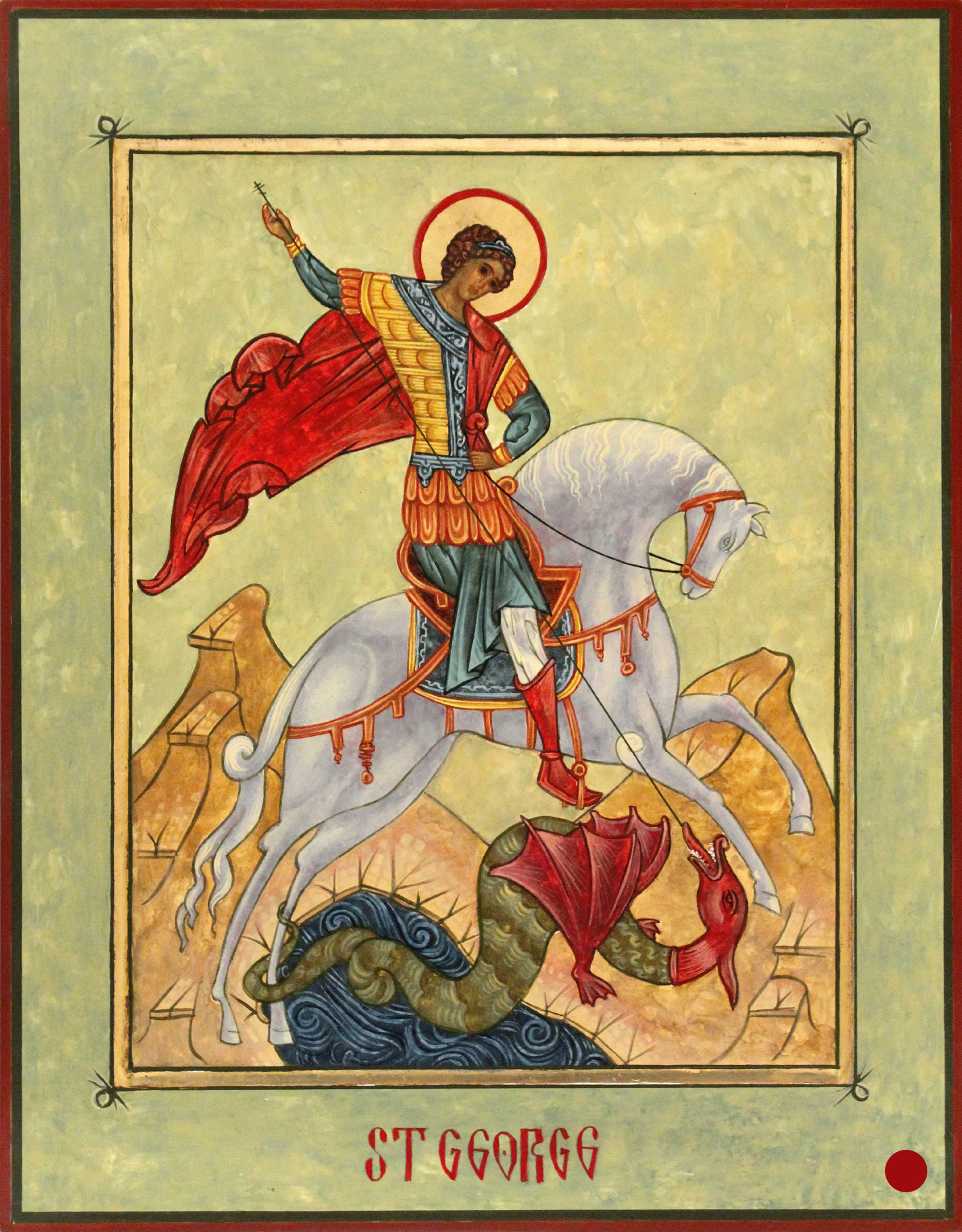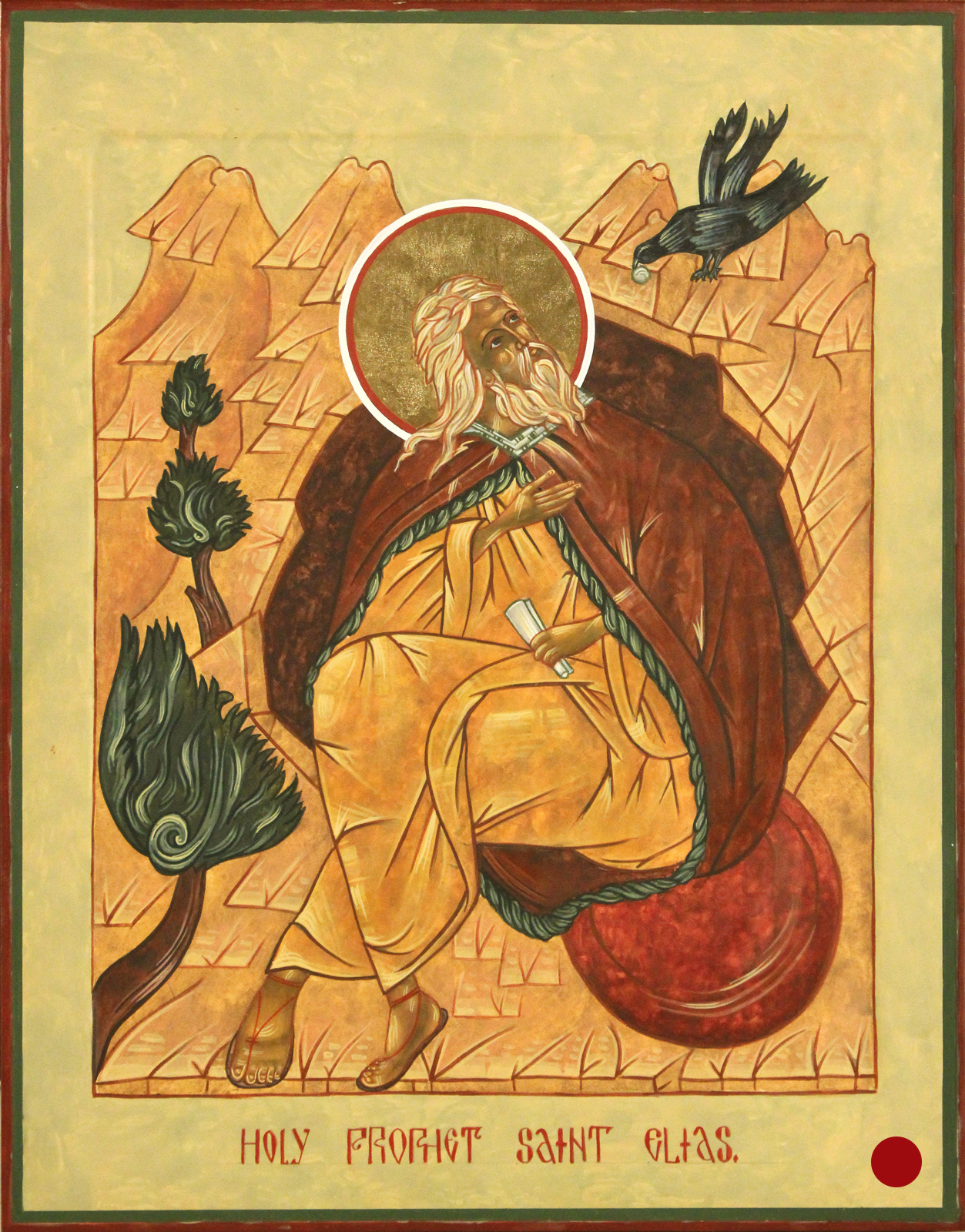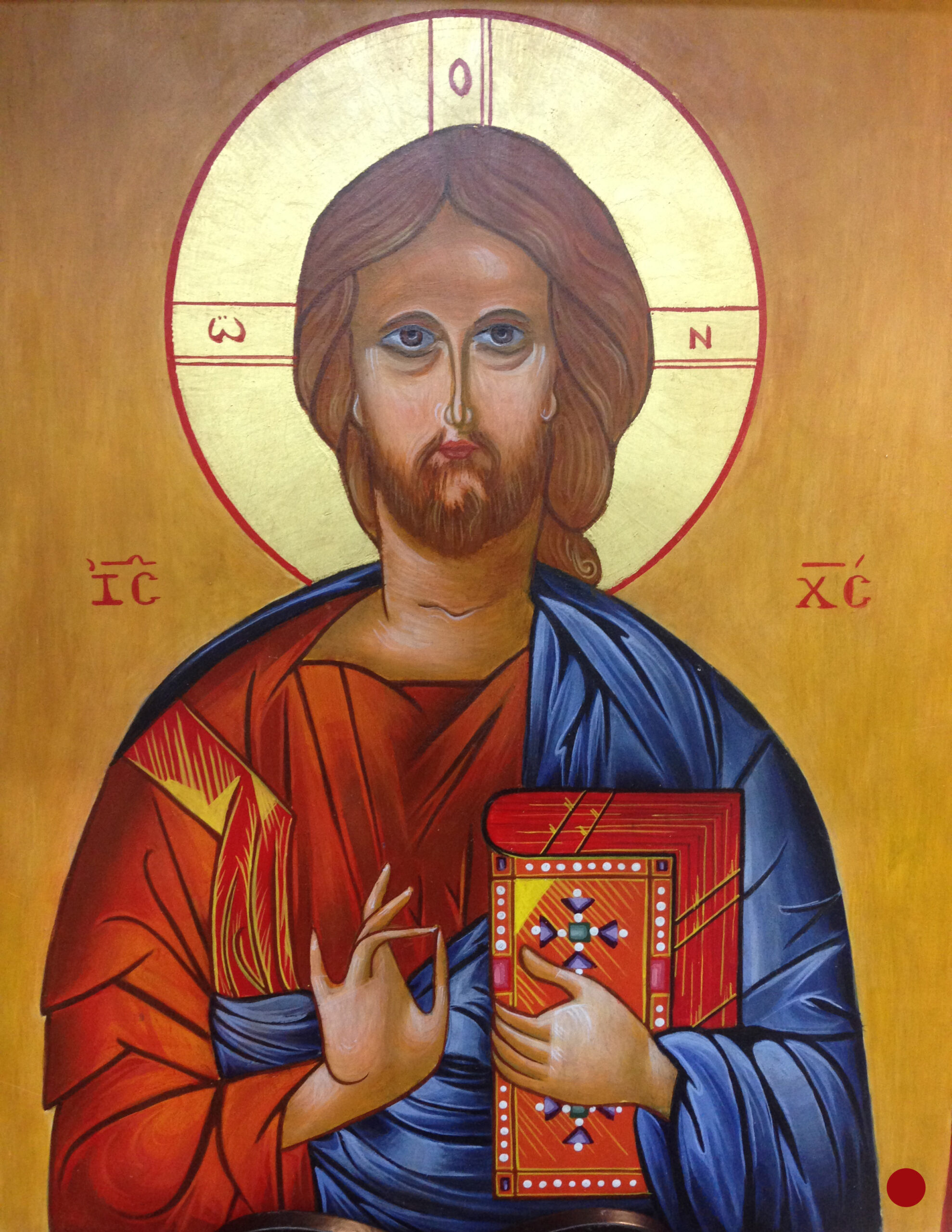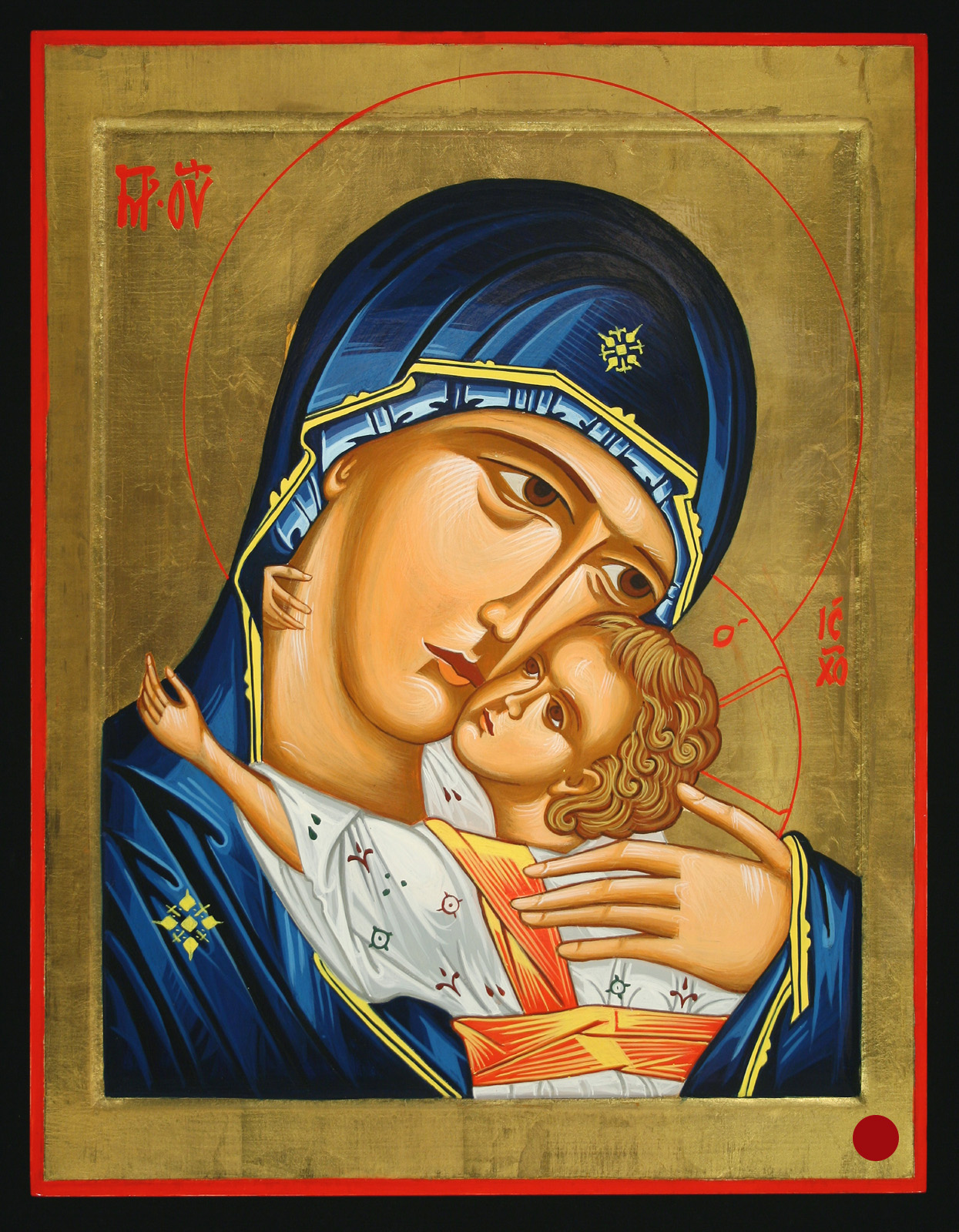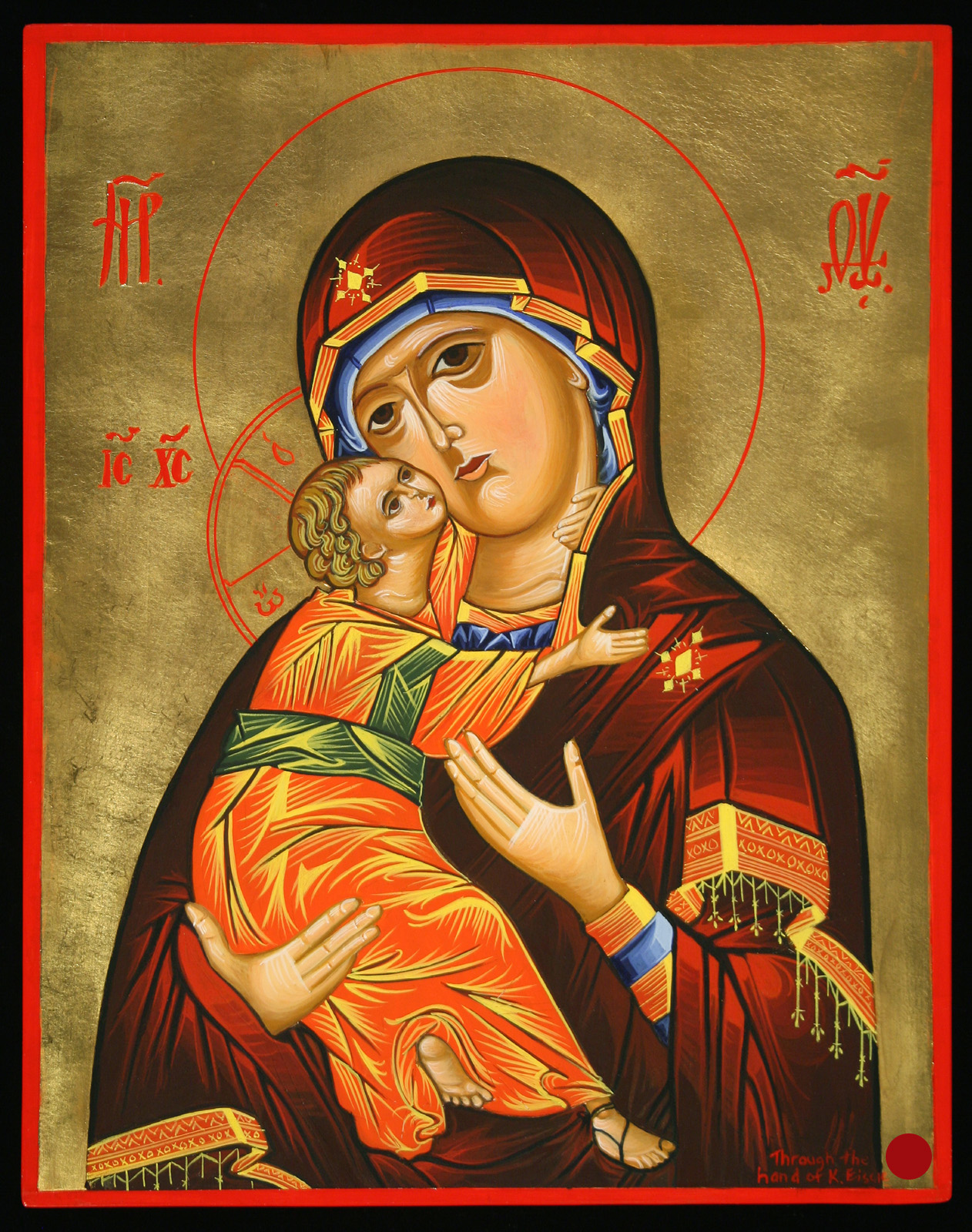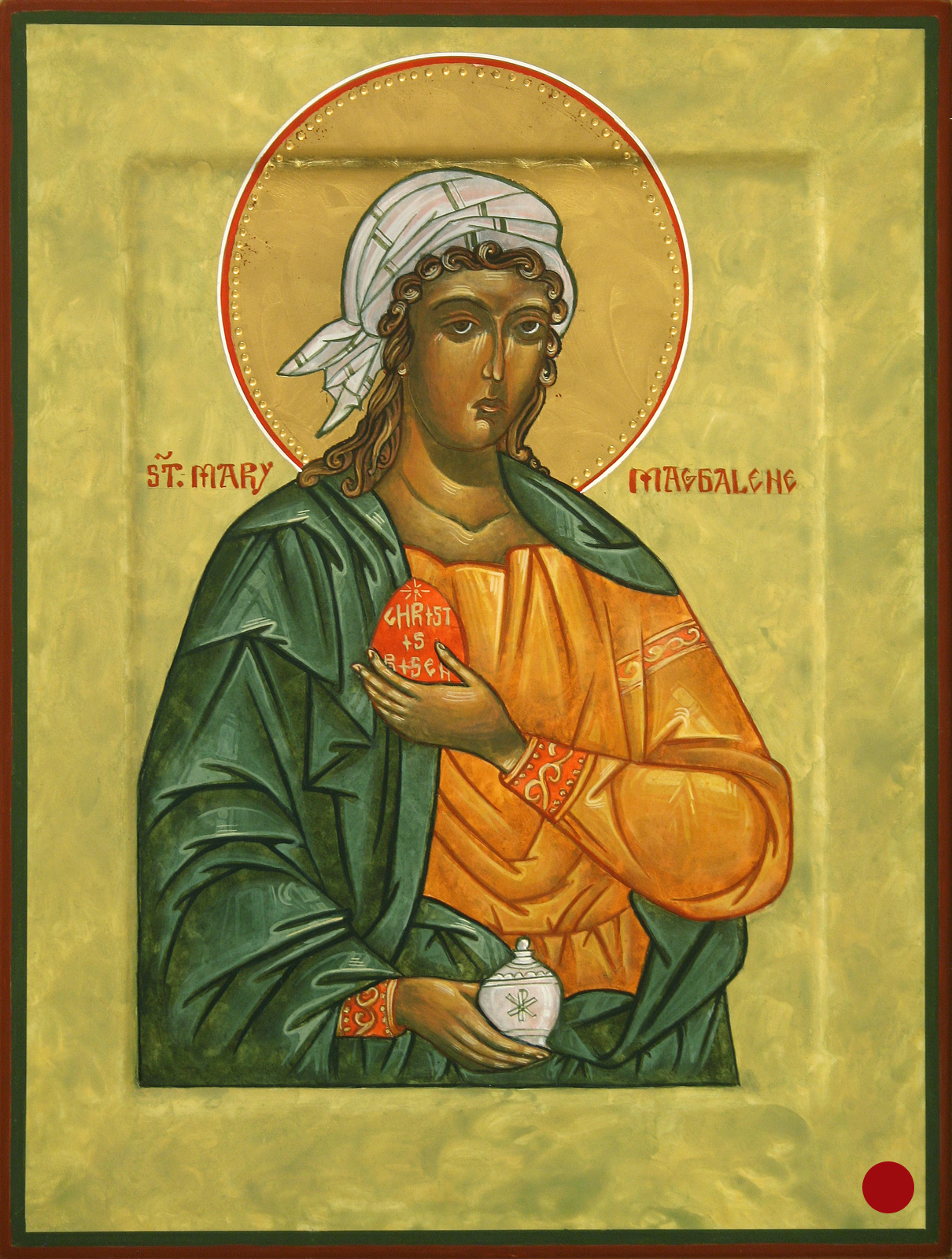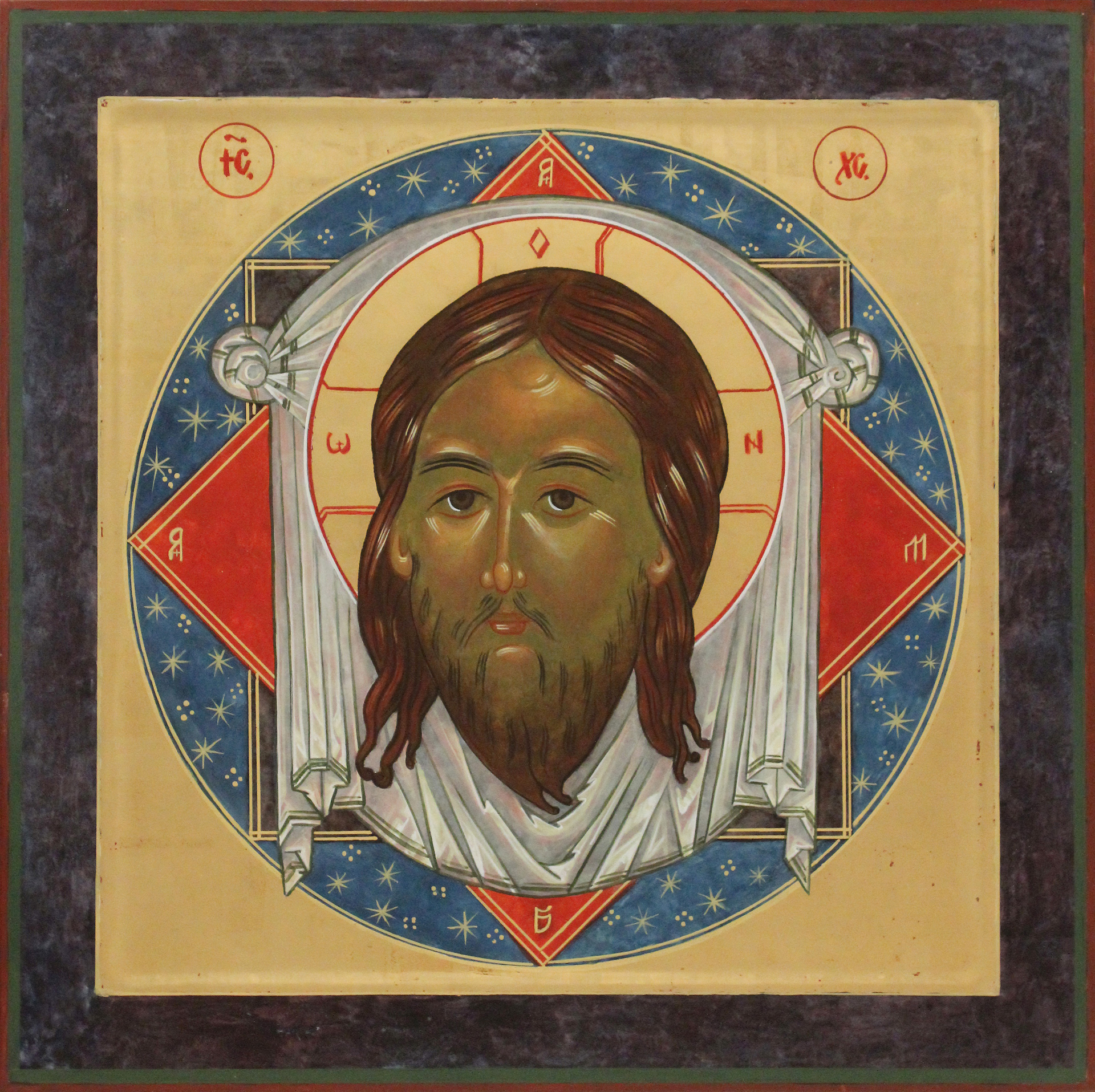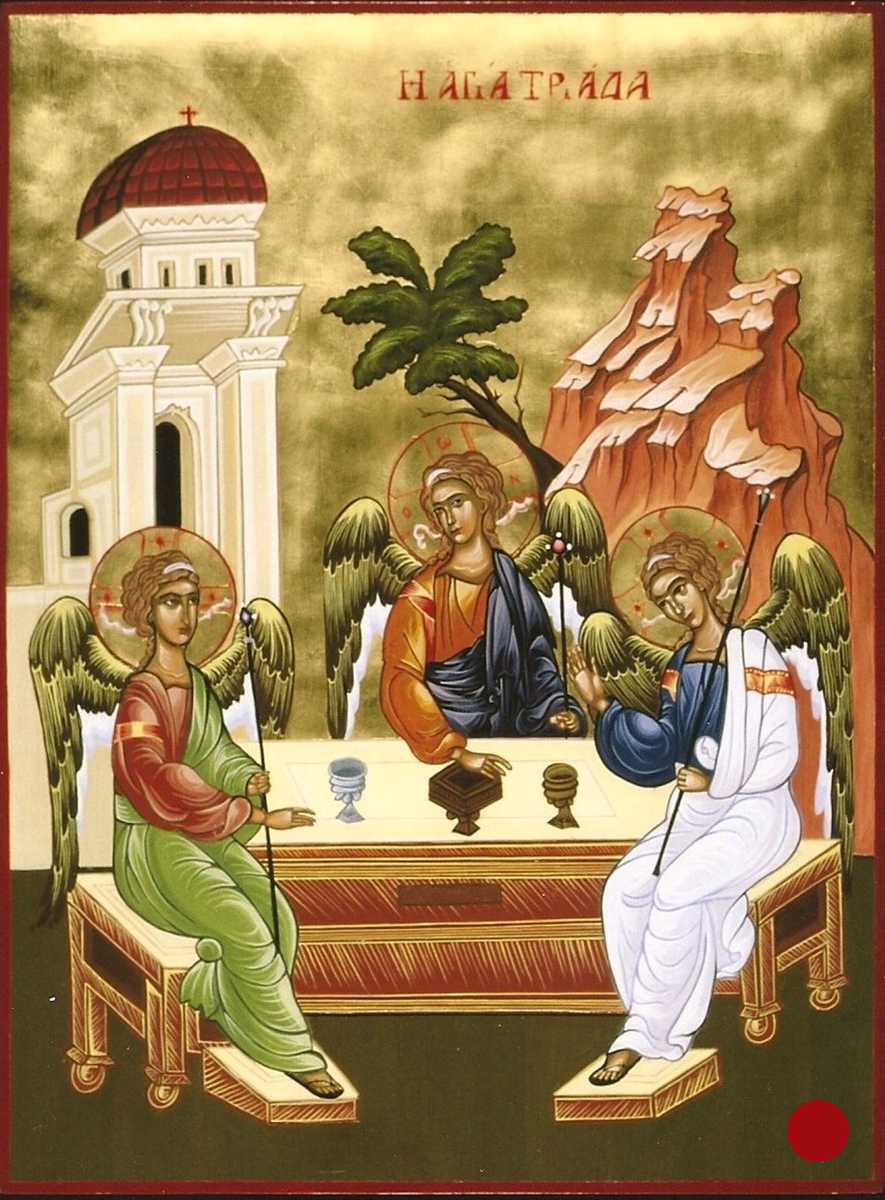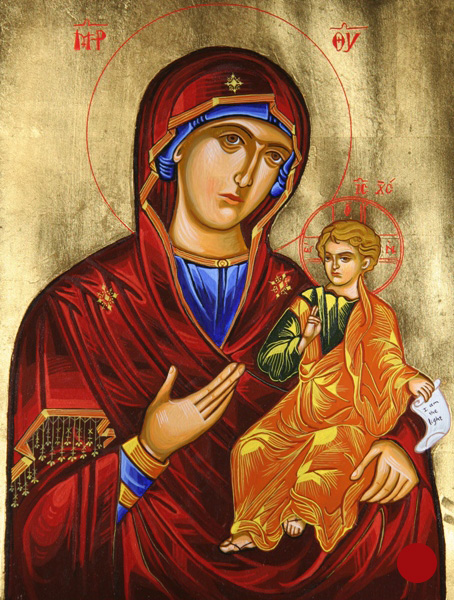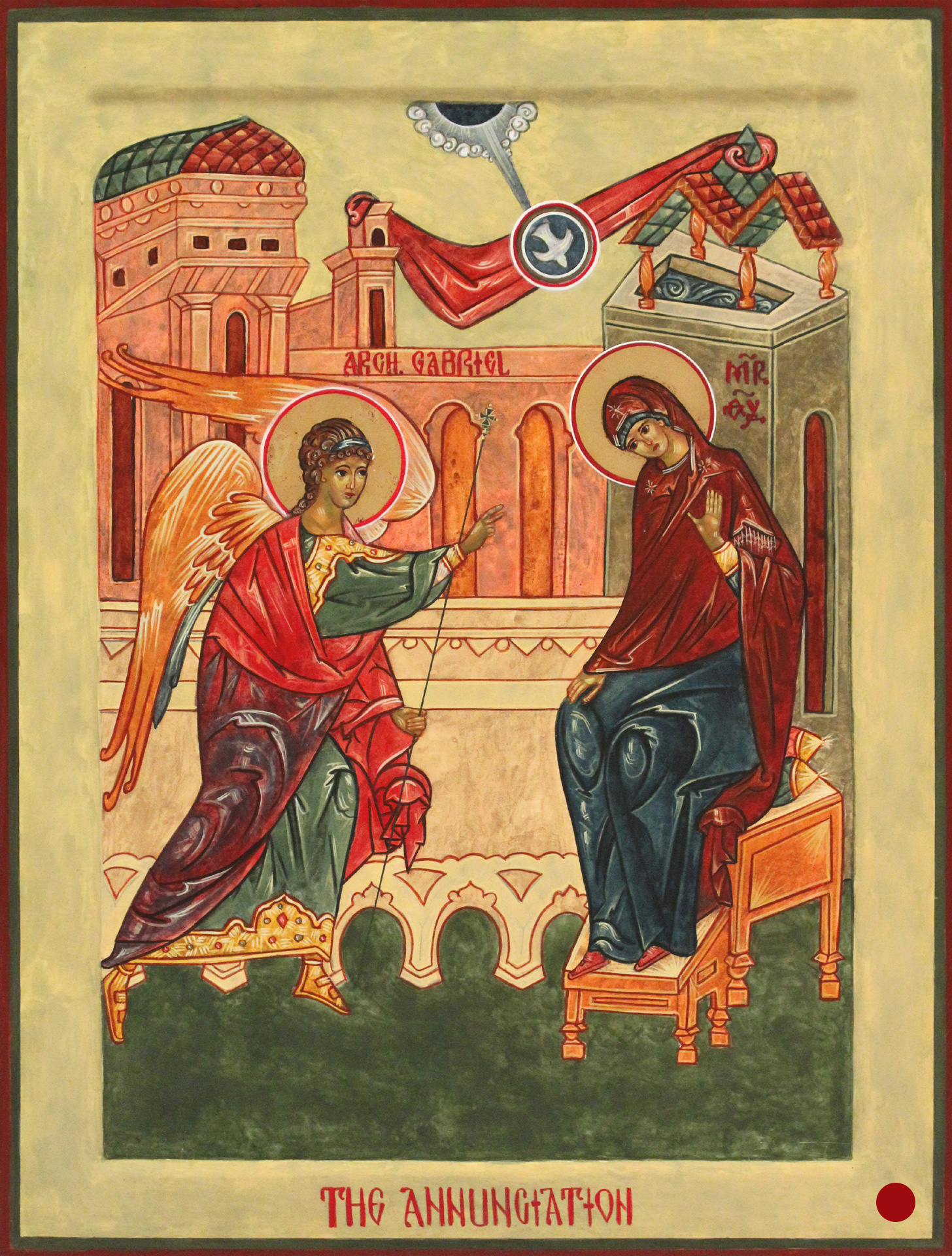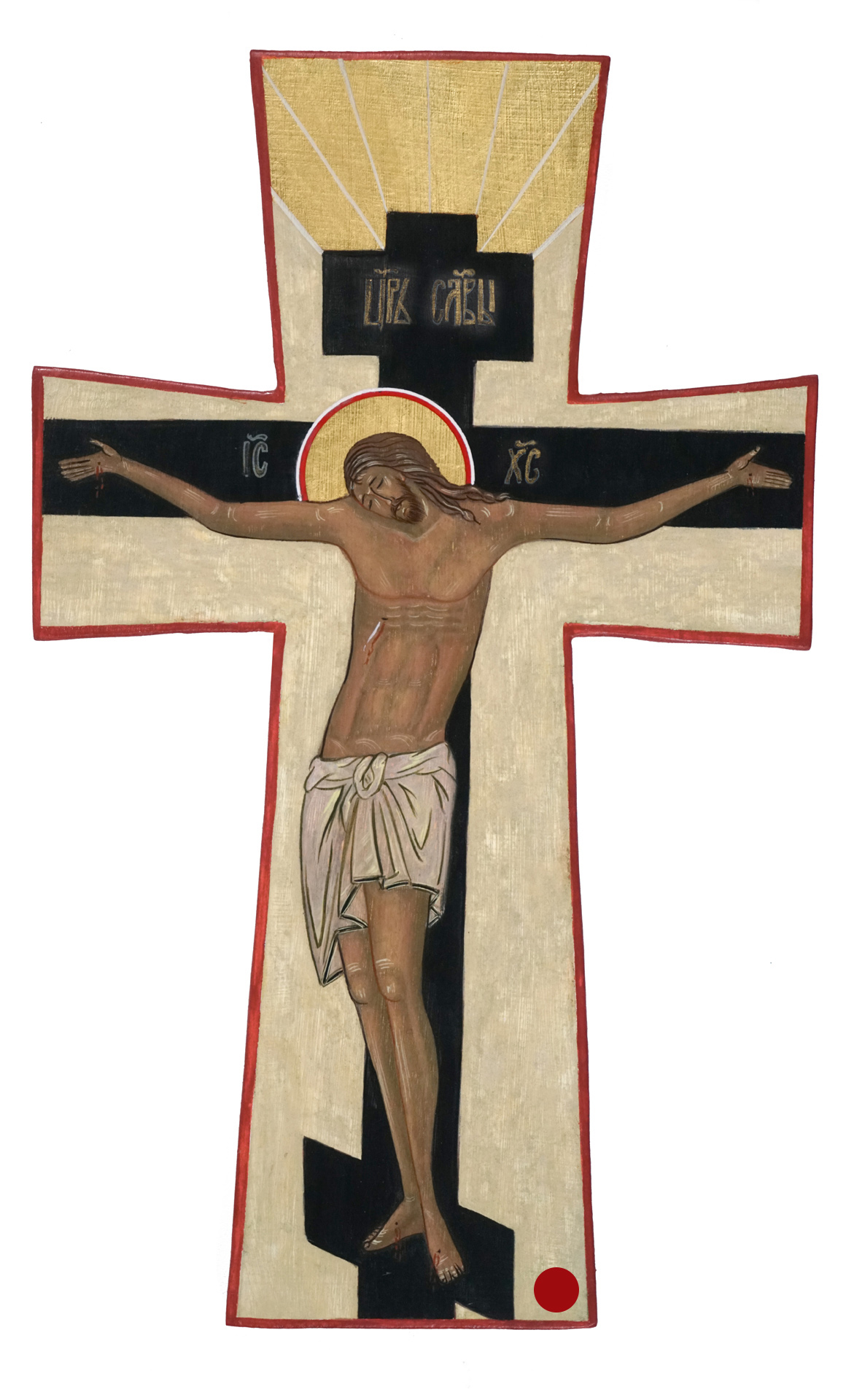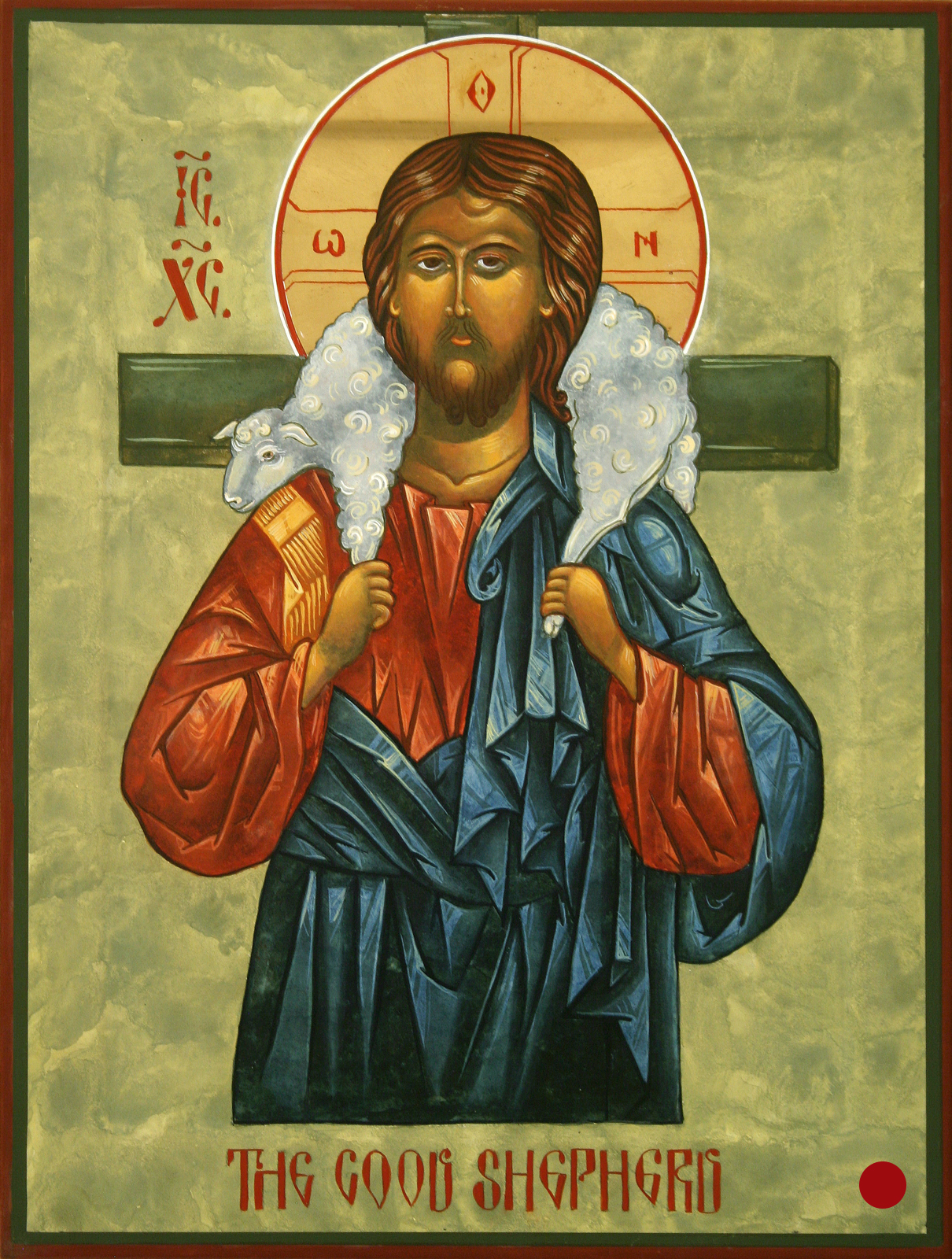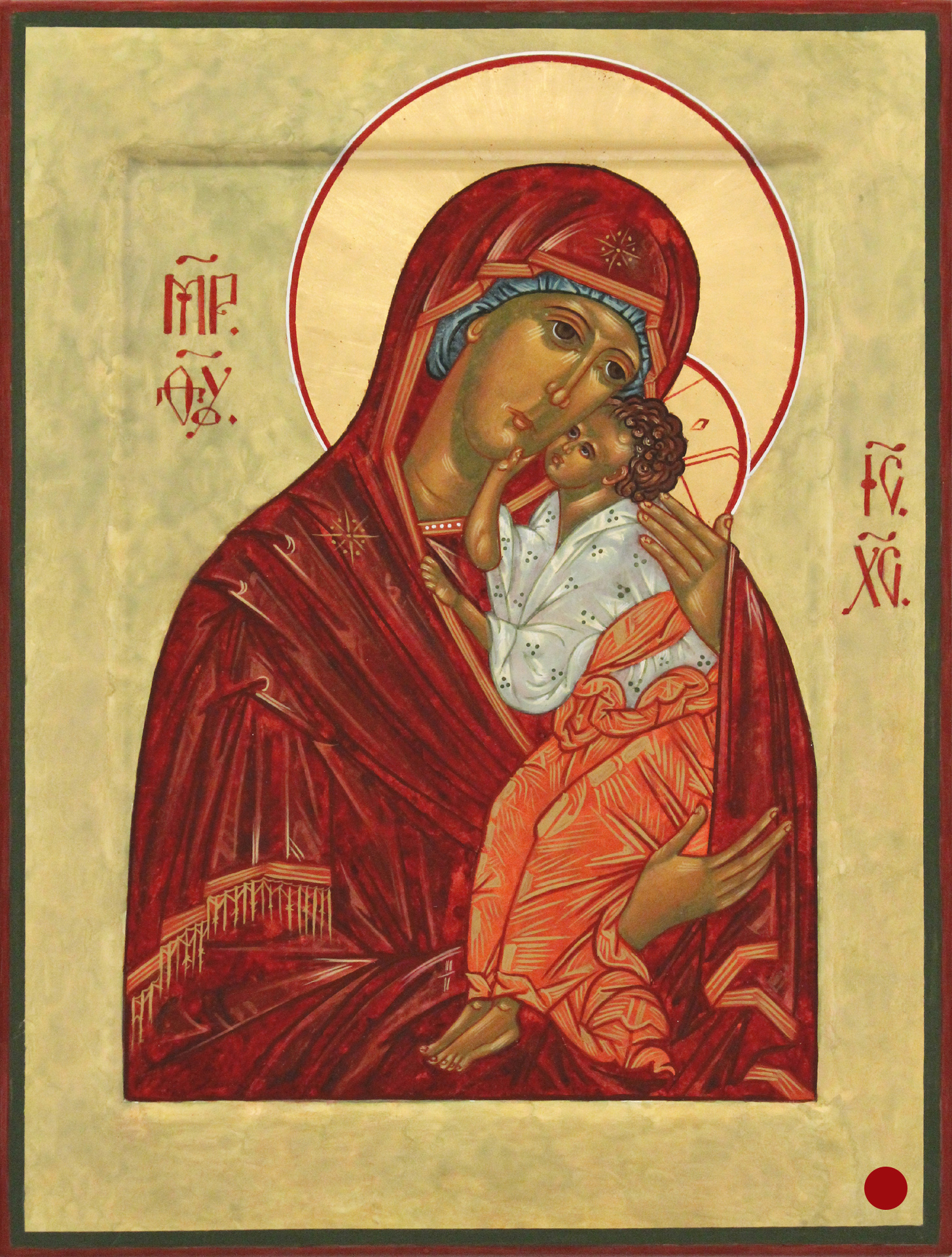Byzantine Iconography has a rich history where the techniques used for each aspect of the painting have symbolic meaning. These traditions have remained unchanged for centuries.
To begin the icon, a birch or poplar board is prepared with many layers of gesso made from marble dust, chalk dust and rabbit skin glue. Traditionally, 33 layers were used to represent Christ’s life. This mixture is applied over linen that has been soaked in the glue. 24k gold is then applied for the halo and, depending on the Greek or Russian tradition, for the background. This precious metal serves as a visual “spiritual doorway” between heaven and earth.
The figure is not intended to be a portrait, instead each stylized feature has meaning. The long graceful nose shows elegance, the wide forehead portrays wisdom, and the small mouth signifies that no words are spoken carelessly. The eyes are large to focus on God and the ears are evident to listen to God. If one looks closely at Jesus’ forehead, you will notice that one side is larger than the other. This represents his Godly wisdom in contrast to his humanity.
Colors are also important in the icon. For example, Mary’s blue robe stands for faith and humility while the red robe speaks to the mystery of divine life. Mary is often painted with three stars attached to her garments. These represent not only virginity, purity, and power, but also the Holy Trinity, and Christ’s life, death, and resurrection. Each star is made up of eight rays for the seven days of creation and Christs return.
The paint used in iconography is called egg tempera. It is made by the artist with egg yolk, white wine and pure, powdered pigments ground from rocks and precious/semi-precious stones. As the paint is applied in layers, a glow from within the figure is created. The traditional light and shadow shading are not used. The source of light is always from within.
When painting (or writing) an icon, the artist always starts with a prayer and continues praying and meditating while working. When the icon is finished, wax or varnish is applied, and a closing prayer is said.

